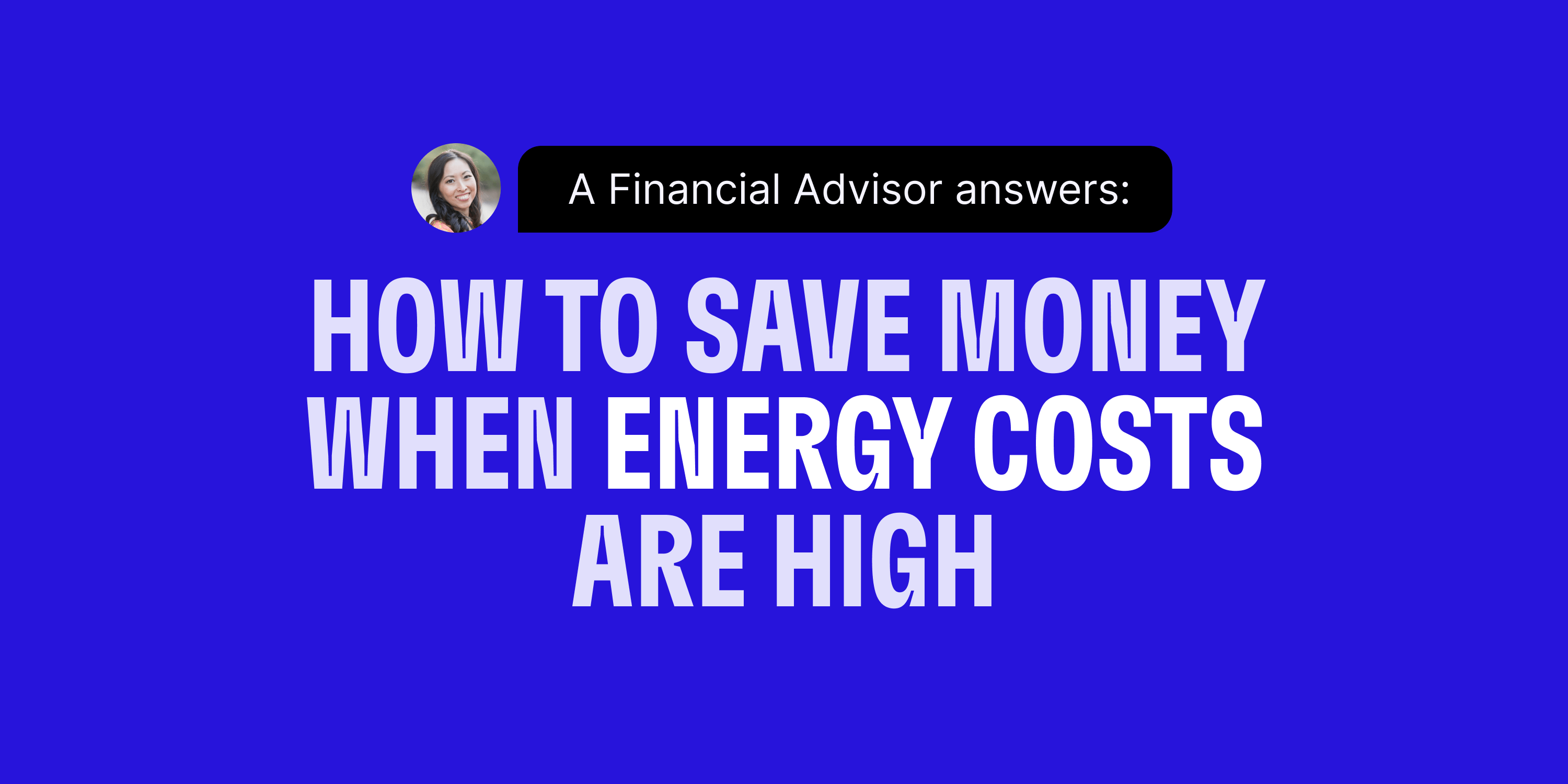
Side Hustle Diaries: How I Made $25k Flipping Sneakers On StockX
Want a 5 figure side hustle flipping sneakers? Learn how Henry did it.
This is some text inside of a div block with Cleo CTA
CTASigning up takes 2 minutes. Scan this QR code to send the app to your phone.

Tips on how to save on gas and cut energy costs 💡

Between inflation, the war in Ukraine, and a spate of record-high temps, energy prices have spiked in recent years. The average household paid $137 per month in electric costs alone in 2022. (A number that’s likely risen since.) But with a few small changes, you can cut your energy bill—and carbon footprint—up to 25%.
If you don’t have tons of cash lying around for energy-saving renovations, here’s how to save on gas and cut energy costs.
Many utility providers offer an energy auditing service to identify where you’re bleeding energy (and savings). This room-by-room exam looks for air and energy leaks, inefficient appliances, poor insulation, and more. You can also conduct your own energy audit using this walk-through from the Department of Energy.
Every door and window in your house should be sealed to prevent energy from escaping (or entering). Whistling windows, drafty doors, and chilled spots by your fridge all indicate a poor seal. Fortunately, you can often fix the problem with some caulk and weather stripping. (Or a new fridge.)
An inefficient HVAC system can drive up your energy prices substantially. Check your HVAC for holes, clogs, or leaks – and if you find them, remind yourself that investing in a professional fix is far cheaper than years of leaky air.
If you’re looking how to save on gas, look no further than your thermostat. You can slash your HVAC costs up to 10% just by setting your thermostat 7-10 degrees higher or lower for eight hours a day. A smart or programmable thermostat that automates the process might save you even more.
Your home’s air filters collect the tiny, nasty bits (dust, dandruff, hair) floating around before it hits your HVAC system. If you don’t change your filters, your HVAC may grow clogged and noticeably less efficient. You can solve this problem – and lower your HVAC’s energy usage – just by replacing your filters every 3 months.
Some utility providers offer cheaper electricity rates during “off” hours (think overnight). Schedule energy-intensive tasks – laundry, dishes, showers, even charging your car – during these hours to take advantage of lower prices.
Not everyone has a few thousand dollars to sink into new, energy-efficient appliances when inflation strikes. But if you’re looking for how to save on gas costs, high-efficiency laundry sets, stoves, and dishwashers make a huge difference.
Did you know that handwashing your dishes uses anywhere from 9-27 gallons of water per wash? By contrast, dishwashers built after 2013 use 5 gallons or less, while Energy Star-label dishwashers are capped at 3.5. With those numbers, it’s easy to see how relying on technology can save up to 8,000 gallons of water annually.
When you have a rank-smelling pair of pants or a 75%-full dishwasher, it’s tempting to start the load early. But most appliances use the same amount of energy regardless of how full they are. Instead, focus on running fewer, fuller loads to minimize your energy costs. (Of course, you don’t want to overload your appliances either.)
Ideally, you should run your fridge around 35-38 degrees and your freezer between 0-5. These temps will chill your food safely without running up your energy bill.
Bonus tip: filling your freezer chock-full of goodies is actually good for you(r wallet). More goodies means more insulation, which means less energy required to cool your unit.
If you have the option between a large energy-sucker and a smaller, energy-efficient option, use the smaller one. Use your toaster oven instead of your full-size oven, an electric kettle over boiling water on the stove, etc.

If you want to know how to save on gas, slashing your shower time is a small-yet-powerful sacrifice. At 2.5 gallons per minute, an 8-minute shower requires up to 20 gallons of water. Thus, trimming just two minutes under the stream easily saves five gallons per day.
Most showerheads spray about 2.5 of water per minute. Switching to a WaterSense-labeled showerhead can shed 2,700 gallons of water per year from your bills. (Not to mention enough electricity to power a house for 11 days!)
In ye olden times, hot water ensured your clothes got proper clean. But today, most detergents work best in colder temps. Since 90% of the energy used for laundry goes to heating water, switching to warm or cold water washes translates to substantial savings. Your clothes might even last longer and suffer fewer wrinkles, too!
Most water heaters have a default temperature around 140 degrees. Adjusting down to 120-130 can reduce your water heater costs by hundreds of dollars annually.
It’s the obvious tip, but it bears repeating: when not in use, turn off your lights and electronics. You can also invest in motion sensors to automatically turn your lights off after you leave. There’s no need to light an empty room!
Some electronics don’t fully power off; instead, they have a “standby” mode when not in use. These items are responsible for “phantom energy” usage that secretly drives up your electric bill. But smart power strips and outlets cut the current when these devices aren’t in use, saving $100 or more annually.
LED lightbulbs use 75% less energy (and last 25x longer) than incandescent bulbs. Just this simple switch can put $225 back in your wallet each year.
Today, we’ve helped you learn how to save on gas and cut energy costs. But if you really want to take your finances to the next level, you need Cleo.
Our budgeting tools can organize your finances, find and trim excessive expenses, and put you on the path to better habits. Best of all, we’ll roast you any time, at any price – guaranteed.
Enjoy this post? Give it a share or send it along to a friend. You never know, it could make a big difference. Big love. Cleo 💙

Want a 5 figure side hustle flipping sneakers? Learn how Henry did it.

How a savings app could be your route to financial freedom 🚆

No more Excel spreadsheets 📱

